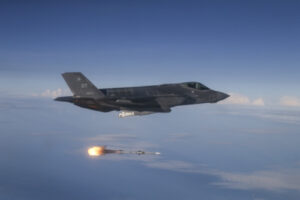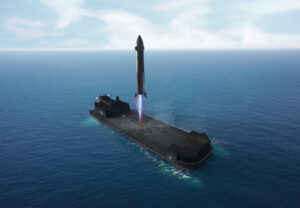Defense Daily
-
 Uncategorized
UncategorizedDefense Watch: IAM Contract Negotiations, Dutch V-Bats, B-2 Unit Costs, Starship Propulsion
IAM Contract Negotiations. Union workers at Boeing’s defense facilities in the St. Louis region, and its new MQ-25 unmanned aircraft production plant across the Mississippi River in Mascoutah, Ill., have […]
-
Friday, July 11, 2025
- Hegseth Directs Widespread Use Of Expendable Drones By End Of 2026
- Bollinger Modifying Vessel As Landing Platform For Rocket Lab’s Neutron Launch Vehicle
- Army’s Goal To Build 100,000 155mm Rounds Per Month Delayed To Mid-2026
- Massive Ordnance Penetrator Modification Program Delayed By Build of Surrogate Targets
- CENTCOM Chief Wants $150 Million To Acquire Technology To Test And Evaluate
- Booz Allen Invests In Cybersecurity Firm Focused On Machine Identity
- Classification Remains Barrier to DoD Space Information Sharing with Allies
-
Friday, July 11, 2025
- Hegseth Directs Widespread Use Of Expendable Drones By End Of 2026
- Bollinger Modifying Vessel As Landing Platform For Rocket Lab’s Neutron Launch Vehicle
- Army’s Goal To Build 100,000 155mm Rounds Per Month Delayed To Mid-2026
- Massive Ordnance Penetrator Modification Program Delayed By Build of Surrogate Targets
- CENTCOM Chief Wants $150 Million To Acquire Technology To Test And Evaluate
- Classification Remains Barrier to DoD Space Information Sharing with Allies
- Booz Allen Invests In Cybersecurity Firm Focused On Machine Identity
-
 Unmanned Systems
Unmanned SystemsHegseth Directs Widespread Use Of Expendable Drones By End Of 2026
Responding to a recent presidential directive to bolster American drone capabilities, Defense Secretary Pete Hegseth has ordered the military services to take a more aggressive role in quickly purchasing small […]
Tagged in: -
 Space
SpaceBollinger Modifying Vessel As Landing Platform For Rocket Lab’s Neutron Launch Vehicle
Bollinger Shipyards is modifying a 400-foot vessel to be the ocean landing platform for Rocket Lab Corp.’s [RKLB] reusable Neutron medium-lift rocket, Rocket Lab said on Thursday. The “Return On […]
-
 Army
ArmyArmy’s Goal To Build 100,000 155mm Rounds Per Month Delayed To Mid-2026
The Army’s goal to produce 100,000 155mm artillery rounds per month by late 2025 has been delayed by about six months to mid-2026, a service spokesperson confirmed. Army spokesperson Steve […]
-
 Air Force
Air ForceMassive Ordnance Penetrator Modification Program Delayed By Build of Surrogate Targets
The key element of the modification program for the Boeing [BA] 20-foot, 30,000 pound GBU-57 Massive Ordnance Penetrator (MOP) is the Large Penetrator Smart Fuze (LPSF). L3Harris Technologies‘ [LHX] L3 […]
-
 Congress
CongressCENTCOM Chief Wants $150 Million To Acquire Technology To Test And Evaluate
Absent its own acquisition or technology budget, U.S. Central Command has a need for $150 million in fiscal year 2026 to purchase new and emerging systems and technologies to test […]
Tagged in: -
 Space
SpaceClassification Remains Barrier to DoD Space Information Sharing with Allies
Classification remains a barrier to U.S. space information sharing with allies, according to the Government Accountability Office (GAO). “DoD has grappled for years with many of the challenges that currently […]
-
 Advanced / Transformational Technology
Advanced / Transformational TechnologyBooz Allen Invests In Cybersecurity Firm Focused On Machine Identity
Booz Allen Hamilton [BAH] on Thursday said its venture capital unit has made a strategic investment in Corsha Inc., which provides secure machine-to-machine communication to protect operational technology. The value […]
Tagged in:

